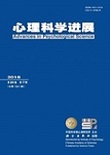With the further development of computers and big data technology, human society and its cultural forms are undergoing profound changes. The production and interaction of cultural symbols have become increasingly complex, and cultural members and their social networks have left numerous texts and behavior footprints, which makes it necessary to describe, predict, and even change the culture, so that computable cultural symbols and their interaction process have gradually become the research object of cultural psychology. In this vein, Computational Cultural Psychology (CCP), which employs big data and computation tools to understand cultural symbols and their interaction processes, has emerges rapidly, making large-scale or even full sample cultural analysis possible. The key variables of CCP are mainly about individualism and collectivism, and the analysis technologies include feature dictionaries, machine learning, social networks analysis, and simulation.
New research avenues of CCP involve the cultural change effect from the temporal perspective and cultural geography effect from the spatial perspective. For the former, Google Ngram Viewer, Google News, Google Search, name archives, pop songs, and micro-blogs were used to analyze the cultural changes after the long-term historical development and the short-term economic transformation. For the latter, both social media (e.g., Twitter, Facebook, and Weibo) and large-scale survey were used to analyze the cultural differences of various countries or regions in different geographic spaces, as well as the relationship between culture and environment, such as cultural diversity along the "Belt and Road", person - environment fit and cultural value mismatch across different regions in a country or all over the world.
It should be noted that there are several limitations in CCP, including decoding distortion, sample bias, semasiological variation, and privacy risk, although new methods and paradigms are provided. In future directions, theoretical interpretation of variables, cultural dynamics, interdisciplinary integration, and ecological validity should be seriously concerned. In particular, accurate definition and theoretical interpretation of big data measurement are needed; a variety of big data corpus (e.g., historical archives) should be used for the evolutionary analysis of dynamic cultures; deep integration, but not conflict, should be encouraged between culture psychology and the sciences of computer, communication, and history; and the "scenarios" of big data should be considered in promoting the ecological validity of cultural psychology.
Taken together, a review of the emergence of CCP, as well as the empirical research on the big data analysis of cultural change and cultural geography, is helpful in understanding the advantages, limitations, and future direction of this new field, which sheds light on theoretical and methodological innovation of cultural psychology.




